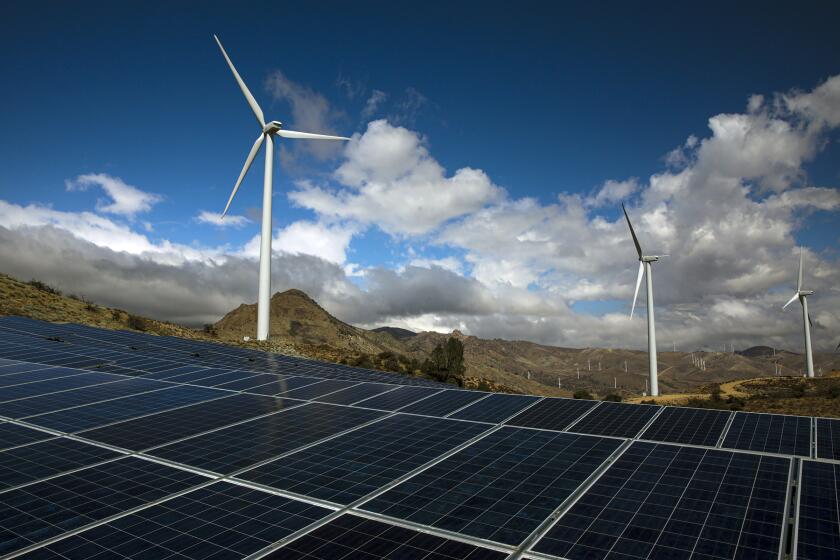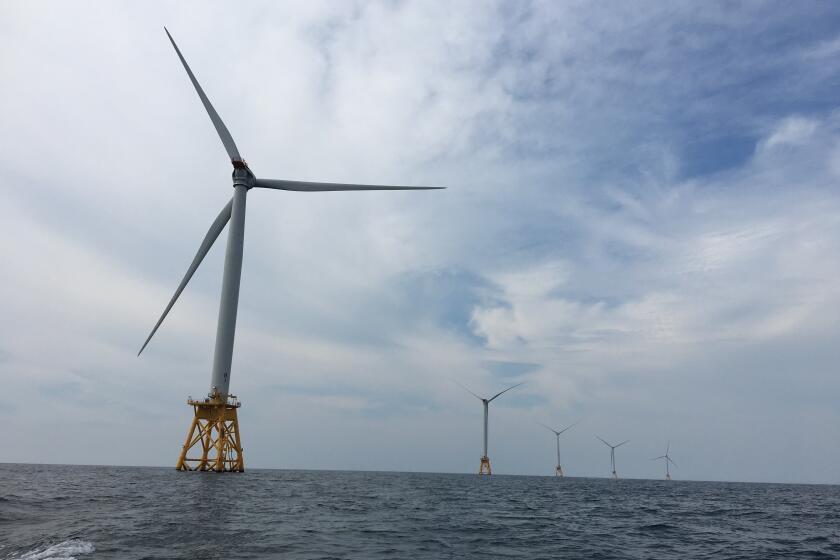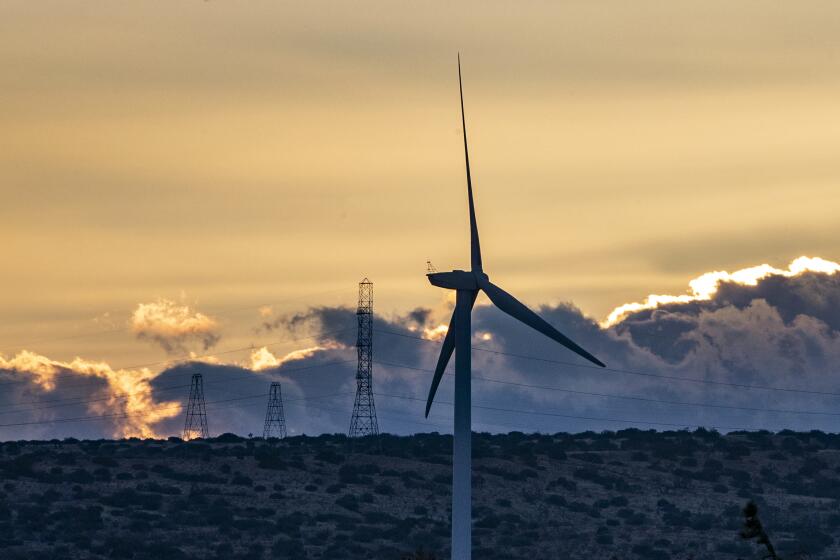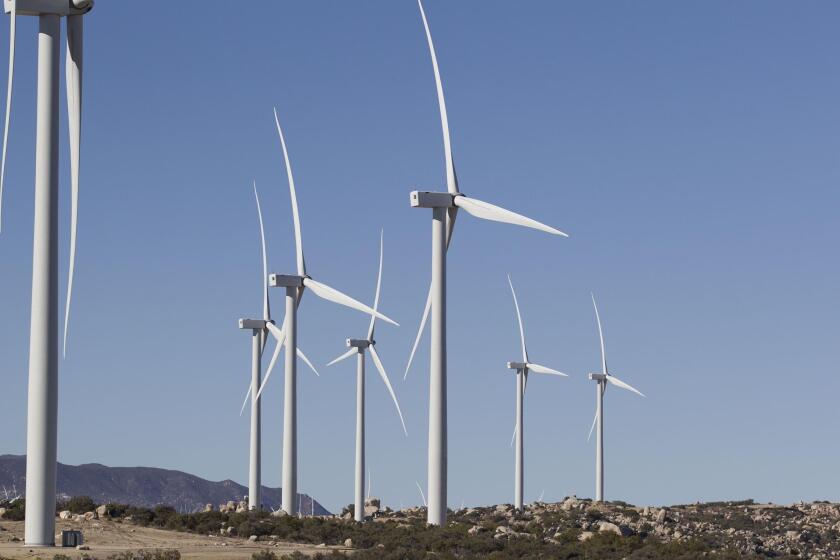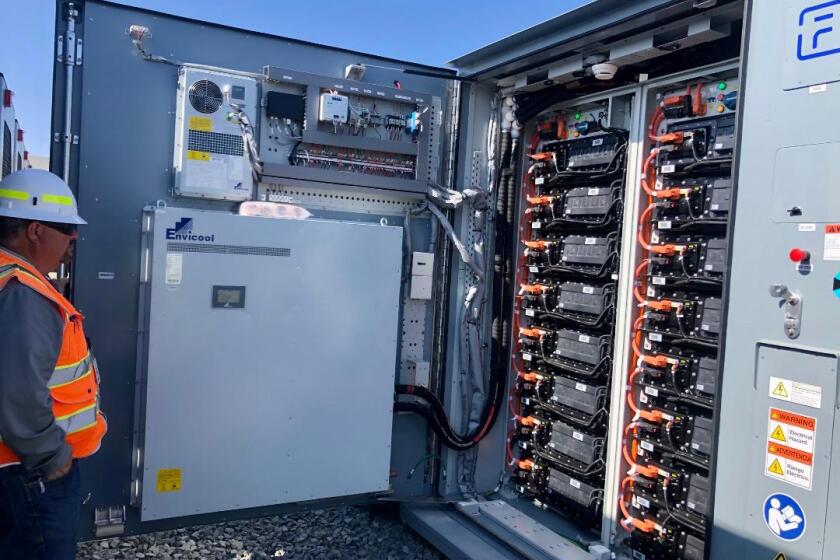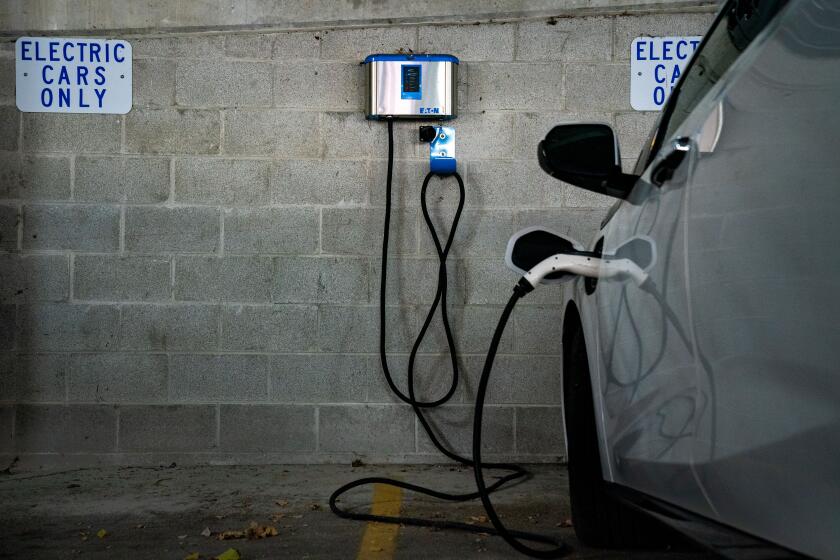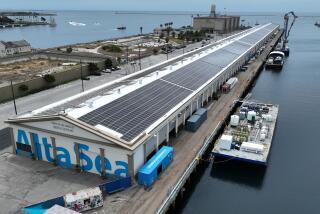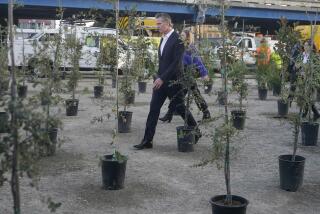Opinion: Wind farms off California’s coast should be the future of the state’s clean energy grid
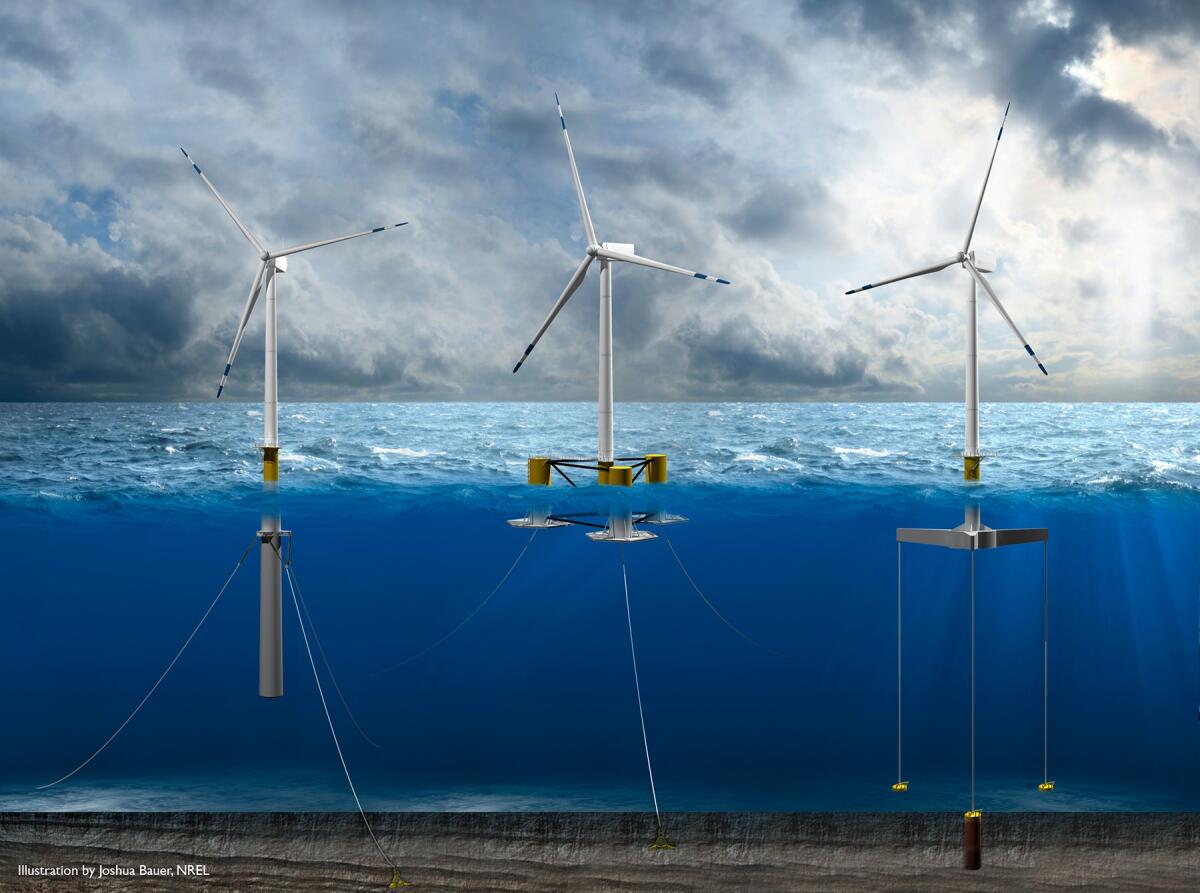
Offshore wind could be the economic engine and energy solution California needs, but only if our state policymakers lead the way — and we’re running out of time to get it right.
Last year California set its first offshore wind goal — 25 gigawatts by 2045, enough to power 25 million homes. That announcement was soon followed by the first federal Pacific offshore wind lease, and port investment announcements in Humboldt County and Long Beach that could support such development.
While this is the boldest goal of any state, California should aim higher to fight climate change, bolster the electric grid and strengthen our economy.
Infrastructure is infrastructure. Does anyone talk about how beautiful oil refineries or freeway exits are?
New research from Energy Innovation, GridLab and UC Berkeley shows smart state and federal policies could help install over 100 gigawatts’ worth of offshore wind farms along the West Coast by 2050, primarily off California’s shores. Thanks to Inflation Reduction Act tax incentives and falling technology prices, electricity costs from offshore wind turbines would be roughly the same as building onshore wind turbines and solar farms.
Our research also shows California can help scale up offshore wind nationwide. That’s important because so far, the technology is taking off globally without the U.S. China has already installed 25 gigawatts and will most likely have more than 180 gigawatts by 2035, while several Northern European countries are targeting 300 gigawatts cumulatively by 2050.
California needs to quadruple the power it gets from the sun and wind to meet its climate goals. But there’s only so much land available. Where should we place more clean energy?
But the U.S. has only just begun installing its first commercial-scale projects in the Atlantic, and the Biden administration only aims to produce 30 gigawatts by 2030. To realize this technology’s economic promise, the U.S. should raise that ambition to 400-500 gigawatts by 2050, with California leading West Coast efforts.
Adding renewable energy creates jobs. U.S. Department of Energy data shows clean energy jobs grew faster than overall job growth in 2022, and our research finds embracing offshore wind would create 60,000 more jobs along the West Coast by 2050 than a clean-energy strategy without offshore wind.
East Coast offshore wind projects faced some initial concern about impacts on views, but recent polling of coastal residents shows overall strong support for offshore wind projects, with over three-quarters of respondents saying visible wind turbines would not affect their desire to visit the beach, or would make them even more likely to visit the beach. New turbines are already being installed far enough from shore to have minimal impact on views. For example, one commercial-scale project, Vineyard Wind, is being built 15 miles off the coast of Massachusetts.
Parking lots and rooftops in urban areas are popular suggestions. Other proposals argue for vast facilities in deserts or harnessing the power of the tides.
Many of the areas identified for development by the federal government on the West Coast are similarly far from the shore, or even farther. The Coos Bay and Brookings lease areas in Oregon start 13.8 miles off the coast and extend all the way beyond 60 miles offshore. The Humboldt, Morro Bay and Diablo lease areas in California are about 20 miles offshore. The federal Bureau of Ocean Energy Management has created visual simulations showing how minuscule the California turbines would appear from land.
Along the West Coast, the ocean is so deep that almost all sites would require floating turbines, a nascent technology that will contribute to placing turbines farther from shore, up to 100 miles out.
If we can master manufacturing, building and installing these specialized projects in California’s port communities and up the West Coast, we could export our products and know-how to other Pacific nations.
The Biden administration’s push for offshore wind farms will eventually reach California, and we should welcome projects that follow proper siting reviews.
Working with Oregon and Washington to deploy offshore wind could revitalize our ports, make our factories a worldwide economic hub and create an entirely new industry for the region.
Offshore wind turbines could also keep our lights on despite worsening heat waves and rising statewide electricity demand. Pacific winds blow most consistently in the summer when temperatures are highest, and late in the day when solar generation falls and residential power demand rises. The power lines plugging offshore wind into our grid wouldn’t be threatened by wildfires like the ones running across land, increasing reliability.
Environmental impact must be a consideration in offshore wind farms, from conception to execution. In the big picture, climate change is one of the largest threats to marine ecosystems, and offshore wind can help mitigate that threat by cutting emissions. Along the way, development must be done in an environmentally safe way.
This technology has just proved its value in a crisis, and the more capacity we add, the more it will save us from high bills and blackouts.
East Coast developers are using proven techniques to avoid hurting wildlife, including speed limits on the ships building and operating wind farms, as well as construction timeline restrictions to avoid breeding seasons. Offshore wind can also help reduce onshore renewable energy development in sensitive habitats.
The Bureau of Ocean Energy Management, which leases federal waters for offshore wind development, has worked extensively with fisheries to create requirements promoting successful co-existence of the two industries.
Although wind turbines seem huge, their footprint would be small. Nationwide, we estimate that even ambitious offshore wind deployment would directly use less than 1% of the U.S. waters suitable for development.
If the batteries of even a fraction of the electric cars on the roads by 2030 are hooked into the state’s power grid, they could help keep the lights on.
But none of this will happen unless California acts quickly. The standard timeline from planning an offshore wind farm to generating power is about 14 years. Developing the port and factory infrastructure needed to build those turbines can take up to a decade.
Delaying investment now would imperil our state’s climate goals, even if California tried to rush development later.
Policy action should start with Gov. Gavin Newsom working with the state Legislature and the California Energy Commission to set a higher state offshore wind target for 2050, sending a strong market signal and driving new investment.
Meanwhile, infrastructure managers in California should coordinate with peers in Oregon and Washington to plan new power line projects to support offshore wind. And the state Legislature should direct funding to spur port investments and develop new union workforce training programs.
California has led the world on clean energy technology and climate solutions — but we are miles behind Europe and China on offshore wind. The sooner we get going, the sooner we’ll reap its economic and climate benefits.
Michelle Solomon is a senior policy analyst at Energy Innovation, an energy and climate policy research firm in San Francisco. Taylor McNair is a program manager for Berkeley-based GridLab, a nonprofit focused on power grid transformation.
More to Read
A cure for the common opinion
Get thought-provoking perspectives with our weekly newsletter.
You may occasionally receive promotional content from the Los Angeles Times.
